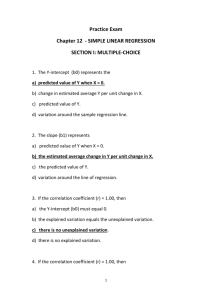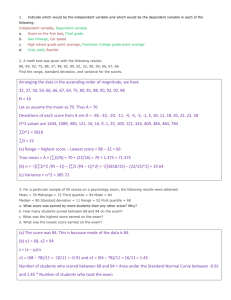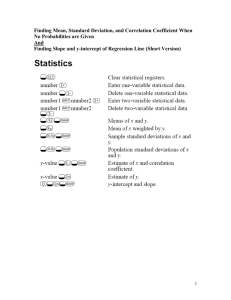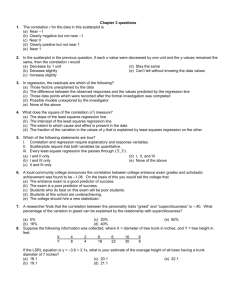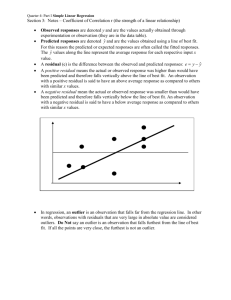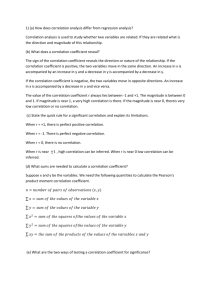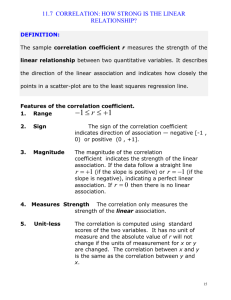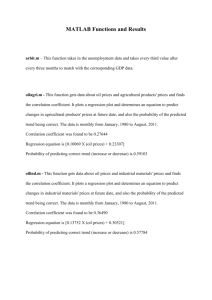Activity 7.1.3 Inference Problems on Correlation and Regression
advertisement
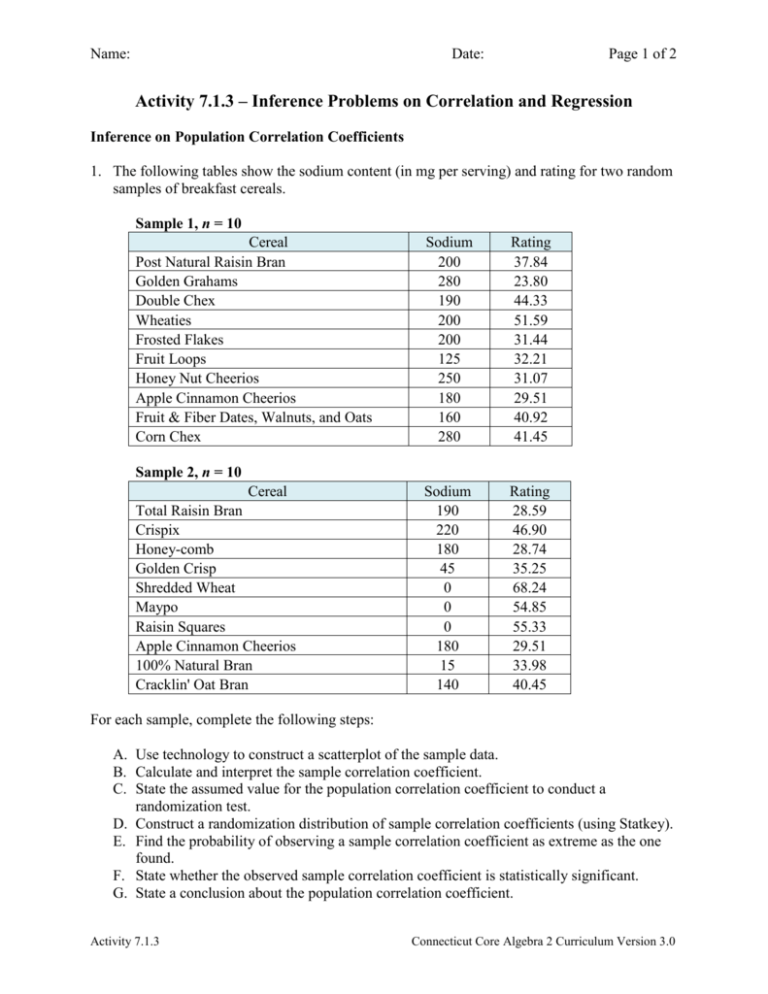
Name: Date: Page 1 of 2 Activity 7.1.3 – Inference Problems on Correlation and Regression Inference on Population Correlation Coefficients 1. The following tables show the sodium content (in mg per serving) and rating for two random samples of breakfast cereals. Sample 1, n = 10 Cereal Post Natural Raisin Bran Golden Grahams Double Chex Wheaties Frosted Flakes Fruit Loops Honey Nut Cheerios Apple Cinnamon Cheerios Fruit & Fiber Dates, Walnuts, and Oats Corn Chex Sodium 200 280 190 200 200 125 250 180 160 280 Rating 37.84 23.80 44.33 51.59 31.44 32.21 31.07 29.51 40.92 41.45 Sodium 190 220 180 45 0 0 0 180 15 140 Rating 28.59 46.90 28.74 35.25 68.24 54.85 55.33 29.51 33.98 40.45 Sample 2, n = 10 Cereal Total Raisin Bran Crispix Honey-comb Golden Crisp Shredded Wheat Maypo Raisin Squares Apple Cinnamon Cheerios 100% Natural Bran Cracklin' Oat Bran For each sample, complete the following steps: A. Use technology to construct a scatterplot of the sample data. B. Calculate and interpret the sample correlation coefficient. C. State the assumed value for the population correlation coefficient to conduct a randomization test. D. Construct a randomization distribution of sample correlation coefficients (using Statkey). E. Find the probability of observing a sample correlation coefficient as extreme as the one found. F. State whether the observed sample correlation coefficient is statistically significant. G. State a conclusion about the population correlation coefficient. Activity 7.1.3 Connecticut Core Algebra 2 Curriculum Version 3.0 Name: Date: Page 2 of 2 Inference on Population Regression Line Slopes 2. The following table shows the number of cellular phone subscriptions in 2011 (per 100 people) and the average life expectancy in 2011 for a random sample of 10 countries. Random Sample of 10 Countries Country Spain Brazil Panama Russia Romania Angola Ethiopia Mongolia Nigeria United States Number of Cellular Subscriptions in 2011 2011 Life Expectancy (in years) 114 123 204 179 109 48 17 105 59 106 82 75 77 69 75 66 62 64 59 79 Complete the following steps: A. Use technology to construct a scatterplot of the sample data. B. Calculate the slope and y-intercept of the least-squares regression line. C. State the assumed value for the population regression line slope to conduct a randomization test. D. Construct a randomization distribution of sample regression lines slopes (using Statkey). E. Find the probability of observing a sample regression line slope as extreme as the one found. F. State whether the observed sample regression line slope is statistically significant. G. State a conclusion about the population regression line slope. Activity 7.1.3 Connecticut Core Algebra 2 Curriculum Version 3.0
